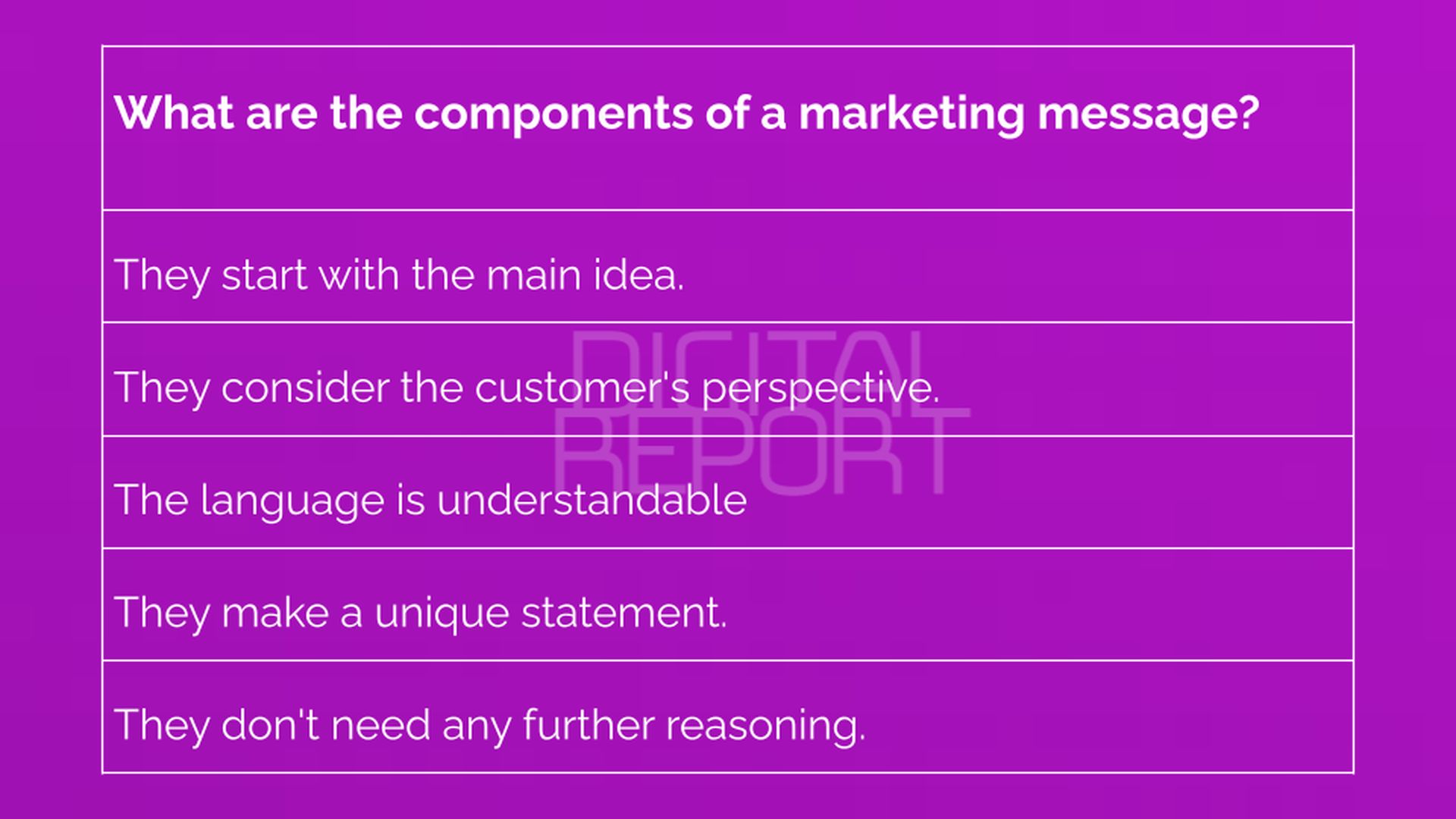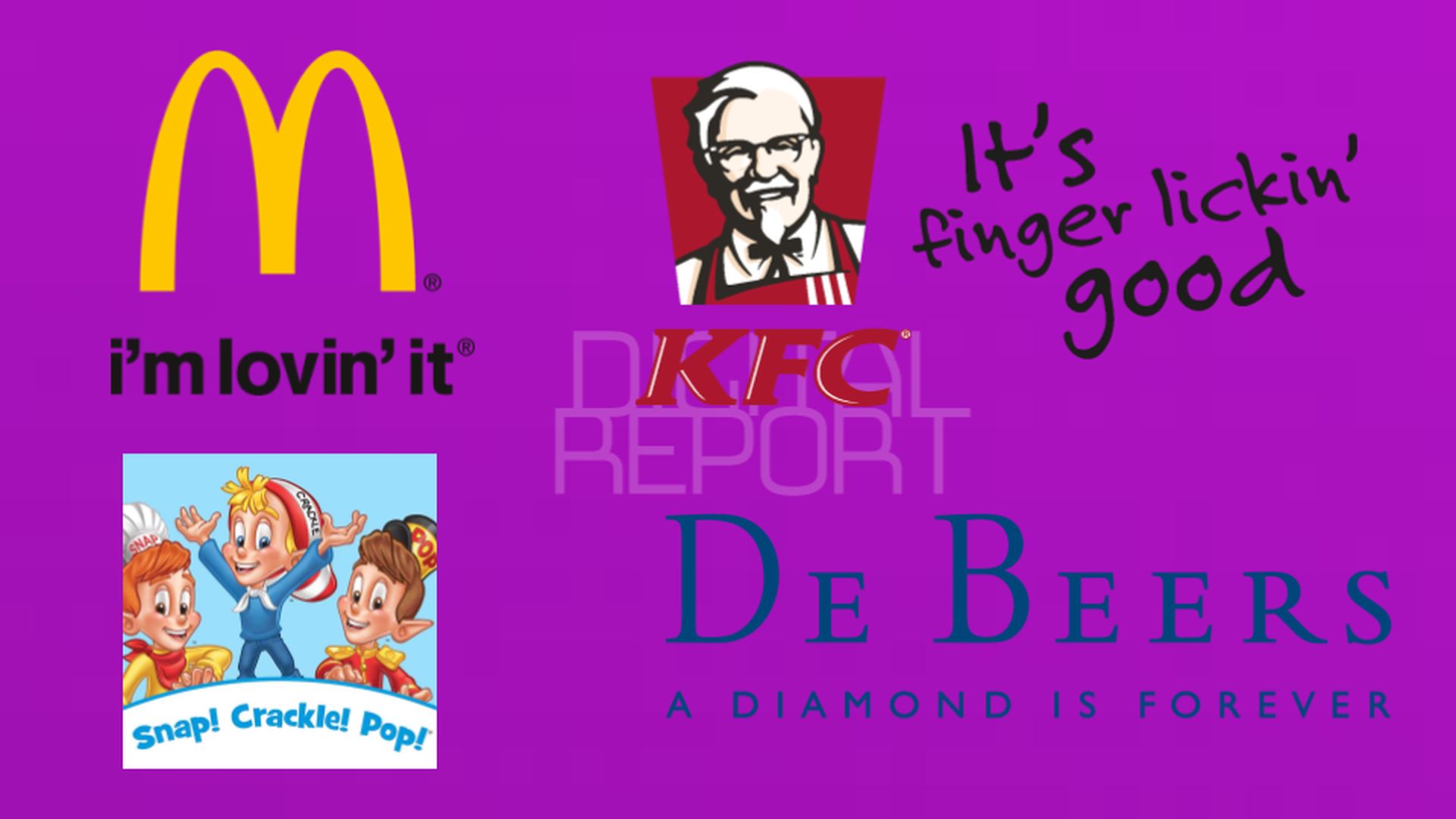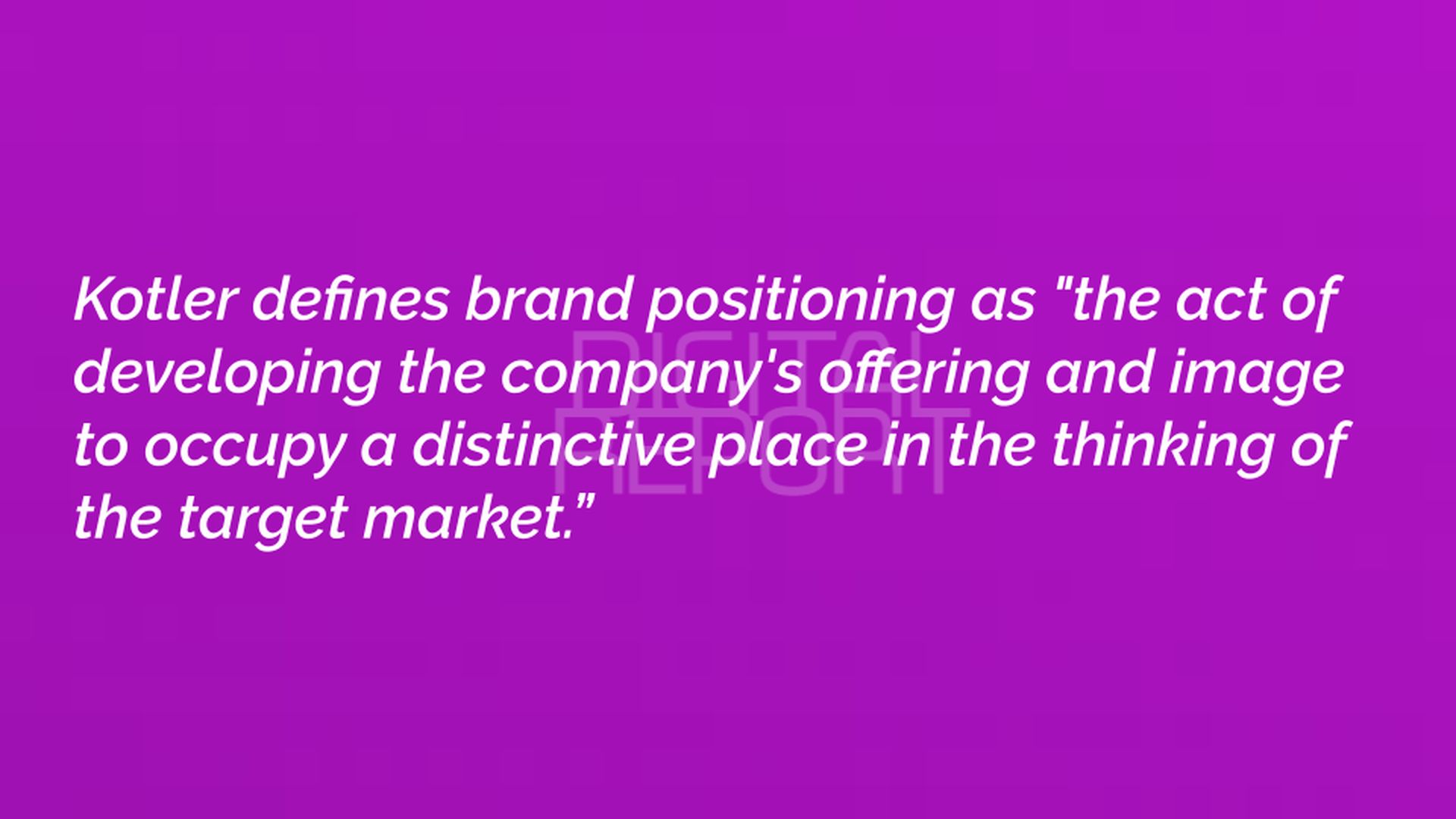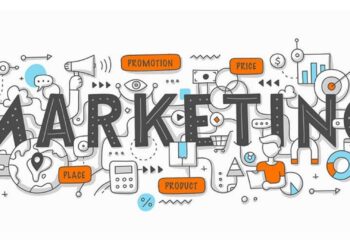Today we are going to discuss every aspect of a good marketing message, learn what is a key marketing message together. How many types of marketing messages do you know? Can you name any marketing message examples to attract customers? Let’s get going!
You understand the value of having a marketing plan as a marketer, but have you considered the contribution your marketing message may make to it?
Your strategy must take into account the wants and demands of your target audience as well as the specific methods needed for each channel you employ, be it email or social media. This strategy also guides the material you produce and how to distribute it to increase the likelihood that your audience will see it.
However, how can you connect this method to the actual content? A marketing message is what you need, and it’s just as crucial as your whole approach.
Table of Contents
What is messaging in marketing?
In marketing, messaging is the process through which a brand conveys the information that consumers want to know about it. It goes beyond only disseminating details about the available goods or services; it also develops your brand identity by highlighting the core principles of your business, including its goal, vision, and values.
Customers may observe your brand’s values and principles through marketing messaging, which helps them form an opinion of your company. This kind of interaction can determine whether a customer chooses to purchase from a generic firm or an engaging and genuine one.
No matter if your company sells goods or services to consumers or businesses, software as a service (SaaS), apparel, or both, you need a marketing message. Let’s examine some companies that used persuasive and straightforward messaging.
What are the components of a marketing message?
There are 5 main components of a marketing message:

What is a key marketing message?
A key message is your company’s hymnal; by having everyone sing from it, you’ll have a louder, clearer voice that communicates much more effectively.
When used internally, brand messages are a terrific way for employees in different teams to rapidly comprehend the most crucial points to promote in a firm, maintaining the messaging of the entire organization’s cohesive and more powerful as a result.
Your company will communicate its essential ideas to present and potential customers more clearly the more often they are reinforced throughout the organization.
Why are key messages important?
Creating persuasive key messages involves creating customer-centric statements for marketing and communication objectives, which is essential in any firm. You want your target audience to hear and retain these marketing messages.
Well-defined key messages, also referred to as brand statements, reflect the essence of what your company offers while making communication easier to manage and more effective. They convey the essence of your company, including your mission, your basic principles, and the advantages your target market will experience.
One size does not, however, fit all. Each buyer persona in a target audience should have its own set of key messages that are tailored to address their requirements and desires specifically in order to improve communication that produces results.
It is simpler to consistently transmit the main message through all of your communication channels when you have a sensible and well-thought-out approach.
The perfect marketing message should accomplish the following things:
- In a way that is understandable to the public and memorable, describe your key offering to them.
- Your audience should be moved by it and feel as though their issues are important.
- Give them a clear understanding of the issue you address, how you differ from the competition, your philosophy, etc.
- Create trust in your goods or services so that people will buy from you and recommend you to others.
What are the types of marketing messages?
Marketing messages cover all forms of communication or media that businesses employ to persuade consumers. They are how businesses present themselves to the public and the value they offer to clients. Marketing communications are used by businesses to increase customer demand, raise brand awareness, and sell goods and services.
21 types of marketing messages
Some common types of marketing messages to use include:
Ethos: In an ethos marketing message, the appeal is made on the basis of legitimacy or authority. This could apply to a product that was directly created by or oversaw by a respectable spokesman or famous person. This could be a potent marketing strategy when promoting sports wear made by a well-known fitness instructor, for instance.
Pathos: Emotional appeals are key to pathos in marketing messages. The brand wants people to associate it with good feelings, which could increase brand awareness. For instance, a coffee firm might present its product as a necessary component of holiday family reunions, forging an emotional bond between the two.
Logos: A logos marketing message seeks to persuade via reason. It gives information to audiences to encourage them to repeat a particular action. For instance, an insurance provider might provide data on a hazardous route where drivers are three times more likely to be involved in a collision but only 20% of them have the necessary collision coverage to safeguard themselves.
Price: Price marketing messages clearly state the cost of a good or service, as well as any discounts they are providing. This encourages clients to evaluate the offerings’ worth and determine whether they can afford the purchase. For instance, a clothing retailer might provide a weekend holiday sale with a 20 percent discount on all merchandise.
Humor: Genuinely hilarious messaging is the goal of humor marketing messages, which aim to engage with audiences. It’s critical to be aware of any applicable cultural sensitivities. For instance, some companies that market to youngsters might create entertaining messaging using cartoons and jokes.
Preemptive: Being the first to make a distinctive claim about a service or product is part of a preemptive marketing message. Although this frequently refers to the goods and services offered by your company, it could also be a criticism of your rivals. For instance, a healthcare business might be the first to inform customers about a novel technique to use its products to address health issues.
Offers: Offers aim to persuade customers to test a good or service in exchange for anything in return. For instance, a photo editing program might provide consumers a one-month free trial before requiring them to buy it. Another illustration may be a furniture retailer that offers free delivery on orders over a certain quantity.
Unique selling proposition: The focus of a brand’s unique selling proposition is what it delivers that other brands do not. Customers are better able to distinguish your brand’s goods and services from those of your rivals by using this marketing message. For instance, a pizza restaurant might promise 30-minute delivery or give you your dish for free, something that rival chains might not guarantee.
Positioning: Using positioning marketing messages, a brand can choose the best brand or product and evaluate it against the competitors. It could concentrate on a certain aspect to emphasize while contrasting the objects. For illustration, a grocery store might demonstrate how its store-brand goods provide the same quality as name-brand goods for less money.
Quality: The positioning of the product based on its quality is a key component of quality marketing messages. This tactic frequently tries to imply that a good or service is prestigious and of high caliber. A luxury shoe company might, for instance, emphasize that it uses the best Italian leather to make each pair of shoes.

Call to action: A call to action addresses audiences directly. It delivers a clear instruction that listeners may follow with ease. For instance, a travel agency would advise customers to “call now” in order to make trip arrangements and speak with a reservation specialist.
Storytelling: Marketing messages that use storytelling try to make information more interesting. This entails incorporating it into a narrative to enhance its relatability, humor, or appeal. For instance, a food corporation might make an effort to increase consumer interest in its goods by developing a narrative story that details every step of the product’s manufacturing, from the farmer to the final consumer.
Choice architecture: Marketing messages that use choice architecture organize options to accomplish objectives. For instance, a cable provider may design its bundles to emphasize how to get the most channels for the cheapest price. The idea is to get clients to look for the best offer and buy anything.
Functions: Functions marketing messages outline what a customer might be able to do with a certain good or service. It aids clients in comprehending the advantages of what you provide. A digital keyboard, for instance, might contain lessons pre-programmed to help beginners learn how to play.
Features: Features marketing messages go through how the company integrated the features into the production or service. Customers can then learn how to operate the product thanks to this. The keys on the digital keyboard, for instance, might make it easier for beginners to learn by lighting up when it’s time to push them throughout a song.
Anticipating objections: Anticipating objections requires identifying why audiences may reject new products. It involves creating messages based on these potential rejections, aiming to reduce their effects. For example, a snack company may advertise there are only 150 calories per bag of its new chips.
Signaling: Marketing messaging intended to signal social status do so. It is intended to imply that customers who purchase and wear the products would benefit society in a similar way. An advertisement for a new watch, for instance, might feature a well-known celebrity wearing it.
Nudge: A subtle message is part of a nudge marketing campaign. It tries to provide viewers the freedom to draw their own interpretations of the goods or services. For instance, a perfume company might present gorgeous models at a high-end event to imply that the product is renowned.
Fear of missing out: Marketing campaigns that use the phrase “fear of missing out” try to make a product seem urgent or popular. The idea is to instill fear in potential customers so they would act quickly and buy the product. In order to create demand, a clothing line might only produce a certain quantity of pairs of tennis shoes.
Countersignaling: To appear honest and confident, countersignaling marketing communications downplay social status. This contributes to the perception of a brand’s modesty. For instance, a prosperous business could communicate its early hardships to be successful.
What is a creative message?
The marketing communications that are essential to achieving brand positioning are centered on creative messaging. People’s perceptions of your organization and the items and services you offer are shaped by marketing communications. If you make a mistake, it will impact how your brand is positioned.
Effective marketing messages can be made in a variety of methods, such as through web content, press releases, corporate or campaign slogans, landing pages, and social media posts. Every piece of content you produce should reflect your brand in some way. To promote the business, entice potential investors, and impress stakeholders, marketers must make sure that messaging is aligned with your advertising plan.
Marketing messages to attract customers
Marketing messages don’t have to be deep or difficult to understand. Contrarily, many of the most popular taglines throughout history have been succinct and to the point. Some of the most memorable and effective marketing messages to attract customers are:
- McDonald’s: I’m Lovin’ It!
- KFC: Finger Lickin’ Good!
- De Beers: A diamond is forever!
- Rice Krispies: Snap! Crackle! Pop!

Don’t forget to check out the best fast food marketing strategies of 2022, you can get a lot of important insights in that article too. These appealing, straightforward slogans immediately make people think of a particular brand. Marketers make care to repeat the main message in every aspect of their marketing campaigns after creating this fruitful relationship.
Why is a business message important?
Let’s first discuss messaging and define company messaging in great detail. Businesses and consumers can connect with one another through a variety of channels known as business messaging. SMS, or text messaging, is the most popular messaging method. Everybody has encountered delivery alerts, marketing promotions, advertising campaigns, and appointment reminders. These are the messages that come to mind when we think of marketing message strategies.
Business messaging, however, goes beyond SMS/texting and isn’t just one-way. Any digital platform where your customers already spend time can be used for business messages, and it’s expected that communication can go both ways.
Business texting brings the simplicity and convenience that customers have grown accustomed to in their relationships with friends and family to pre- and post-sale contacts with businesses. According to a 2017 study, 66 percent of customers consider texting to be the best way to get in touch with a business.
Brand positioning
The process of positioning your brand in your customers’ minds is called brand positioning. Brand positioning is the tactic used to differentiate your company from the competition and goes beyond a catchy tagline or flashy design.

To put it another way, brand positioning describes how a brand differentiates from its competitors and how buyers perceive it. A brand positioning strategy calls for creating brand linkages in consumers’ minds in order to affect how they perceive a brand.
Brand positioning strategies have a direct impact on consumer loyalty, consumer-based brand equity, and brand readiness to buy through influencing consumer choices. Effective brand positioning can be defined as the degree to which a brand is regarded favorably, distinctively, and credibly by customers.
How to write a marketing message?
A persuasive marketing message can help you win over new clients. Every company should strive to have one, and in the section below, we’ll go over how to develop one for your particular enterprise.
- Know your target audience
- Be aware your audience’s pain points
- Define value propositions
- Be clear
- Use daily language
- Show off the originality of your brand
- Utilize user-generated content
- Appeal to customer emotions
Know your target audience
You cannot start developing your marketing message without first determining your target audience, much like with other marketing strategies. When you are aware of who they are, you can market to them rather than customers you believe to be interested in you.
In a nutshell, your target audience is a collection of customers who have similar traits and are most likely to buy your items. Although the industry you’re in generally defines your target demographic in general, it’s still necessary to have a deeper grasp.
You can do buyer persona research, evaluate your competition, engage in social listening, invite individuals to focus groups or interviews, and more to find out more about and pinpoint your target audience.
Understanding what your target audience “looks” like is the main lesson you should take away from identifying them. Simple demographic data, such as age and geography, can be used to determine what customers like, desire, and want from the companies they patronize.
With this knowledge, it will be simpler to tailor your methods and develop a marketing message that will appeal to them, especially when addressing their problems.
Be aware your audience’s pain points
You should learn about the difficulties and pain points faced by your audience via your character study.
Remember that pain points are problems that interfere with the daily activities, professional obligations, or general aspirations of your target audience. Usually, your audience is actively looking for solutions to these problems.
For instance, if your company sells marketing software as a service, you might find that your customers have problems managing their campaigns since they work across several platforms. You should emphasize in your marketing message how your user-friendly, all-in-one platform would help them to streamline their work.
If your B2C company provides environmentally friendly clothes, one of your customers’ problems can be their inability to locate brands with minimal environmental impact. You should address their desire to reduce environmental degradation through sustainable buying options in your marketing message.
You won’t have to speculate as to why your consumers require your services because you’ll grasp their pain spots. You may therefore develop a marketing message that caters to their demands.
Gathering the background data is step one and step two on this list, and step three will assist you start developing your message.

Define value propositions
Value propositions highlight the distinctive benefits of your product or service and reassure customers that your company is built specifically to fulfill their needs. It makes it crystal plain why customers should work with you rather than a rival, which is the entire goal of a marketing message.
When crafting your message, demonstrate how your product or service will alleviate their problems. Keeping with the eco-friendly business example, you may expressly state that your apparel is made locally to set yourself apart from your rivals that outsource the mass production of their products.
This statement lets customers know that by creating products that are ethically made and environmentally friendly, you are alleviating their problem of a shortage of sustainable apparel businesses.
Be clear
Your marketing message must be powerful, and you must express as much as you can in a limited number of words. Don’t try to avoid the subject. Instead, be direct and describe how your product is a fix.
Customers shouldn’t have to overthink your words in order to read your message and locate the solutions to their queries. Put clarity, conciseness, and readability first because you want your words to be able to speak for themselves.
Use daily language
You shouldn’t presume that your consumers are familiar with or comprehend the technical lingo associated with what you sell just because they work in your business. As a result, it’s crucial to appear conversational and utilize language that the majority of viewers will find acceptable. Your message copy should be clear, concise, and devoid of industry-specific jargon.
You may, for instance, employ technical language to describe the attributes of your most recent car model. However, only true automotive fans would get the significance of having a 600 horsepower engine and AAA consistent tire quality grading (What does it even mean? Right!?)
When conducting talks, try to write along with the conversation, keep a positive attitude, and welcome clients. They might find robotic and technical language puzzling and conclude that working with you will be similarly challenging and perplexing.
In conclusion, by being friendly and talkative, you are able to connect with everyone, from inexperienced business clients to seasoned CEOs.

Show off the originality of your brand
The overarching goal of your marketing message is to draw in your target audience while also differentiating you from your rivals. Given this, creativity is a crucial component of your concluding statement.
Regular marketing messages give the impression that they might have come from any of your rivals, while innovative ones highlight your unique selling proposition. This can be the character of your brand, the characteristics that make you stand out from your rivals, or a combination of the two.
Your words should demonstrate how particular to your organization both your marketing message and your solutions are.
Utilize user-generated content
Consumers are 14% more likely to believe suggestions from other consumers than from brand employees. In light of this, including UGC in your messaging such as endorsements and reviews might assist you in proving the worth of your items.
Seeing that someone in your target market has benefited from your solution can influence their decision because they are likely facing similar problems. You may add, “95 percent of our customers adore [blabla], and you will too,” as an example.
Appeal to customer emotions
There are numerous consumer behavior models that describe how people choose what to buy. Some models claim that it is accomplished through logical analysis, while others claim that it is entirely emotional. In actuality, it’s probably a mix of the two, and you should take advantage of this.
You can highlight your brand’s distinctiveness to appeal to client emotions using strategies like hilarious content. You can also use value propositions to appeal to customers’ logical thinking and demonstrate how you’ll be able to solve their problems.

Following that, you must select a positioning statement that will be heard by your target audience.
A brand positioning statement can be easily defined by condensing it into three words. “Vegan, traditional, and feminine,” for instance. Avoid using phrases like “quality-products, unique, successful,” which are the goals of every brand.
The final task is to ensure that everything you do reflects this brand positioning like packaging, design elemets, services, products, etc.
Best marketing messages of all time
Let’s review some of the most effective marketing messages of all time!
Marketing message examples
Effective marketing communications draw prospects and turn them into paying clients. We’ll go over some actual instances of persuasive marketing communications below.
Nike
No matter what sport they play or who they are, Nike, a clothing and apparel company, is dedicated to giving everyone who needs it equipment. With the slogan “Where All Athletes Belong,” Nike communicates to their target market that they have something to offer everyone, from professional athletes to beginners.
Apple
Apple’s 66-spot Mac vs. PC campaign, one of the most recognizable brand-development marketing projects, ran from 2006 to 2009. This ad was entertaining and educational, straightforward and effective, and it contributed to the development of Mac as a brand.
Marlboro
One of the most effective and despised advertising campaigns of the 20th century was the Marlboro Man promotion, which debuted in 1995. The advertising campaign made Marlboro one of the most popular cigarette brands in the world by showcasing the “can-do spirit of the American cowboy.”
Chipotle
At fast-food restaurants, it can be difficult for people with dietary restrictions or food choices that don’t conform to popular conceptions of nutrition to find something to eat. The marketing slogan for Chipotle is “Find your plant power.” With this marketing message the company is directly addressing people with various needs, encouraging them to sample items from its enlarged menu that are plant-based, and letting them know that they understand there is a market gap for their need.
Conclusion
In this article we’ve discussed every aspect of how a good marketing message should be. By the you can also check out our article about neuromarketing for more insights. In summary we discussed:
- What is messaging in marketing? In marketing, messaging is the process through which a brand conveys the information that consumers want to know about it.
- What are the components of a marketing message? Marketing messages cover all forms of communication or media that businesses employ to persuade consumers.
- What is a key marketing message? A key message is your company’s hymnal; by having everyone sing from it, you’ll have a louder, clearer voice that communicates much more effectively.
- Why are key messages important? Creating persuasive key messages involves creating customer-centric statements for marketing and communication objectives, which is essential in any firm.
- What are the types of marketing messages? We defined 21 types of marketing messages above.
- Marketing messages to attract customers. Marketing messages don’t have to be deep or difficult to understand. Details above.
- Why is a business message important? Let’s first discuss messaging and define company messaging in great detail. Businesses and consumers can connect with one another through a variety of channels known as business messaging.
- Brand positioning. The process of positioning your brand in your customers’ minds is called brand positioning.
- How to write a marketing message? A persuasive marketing message can help you win over new clients. Learn simple tricks above.
- Best marketing messages of all time. Let’s review some of the most effective marketing messages of all time above!
- Marketing message examples. We went over some actual instances of persuasive marketing communications above.










